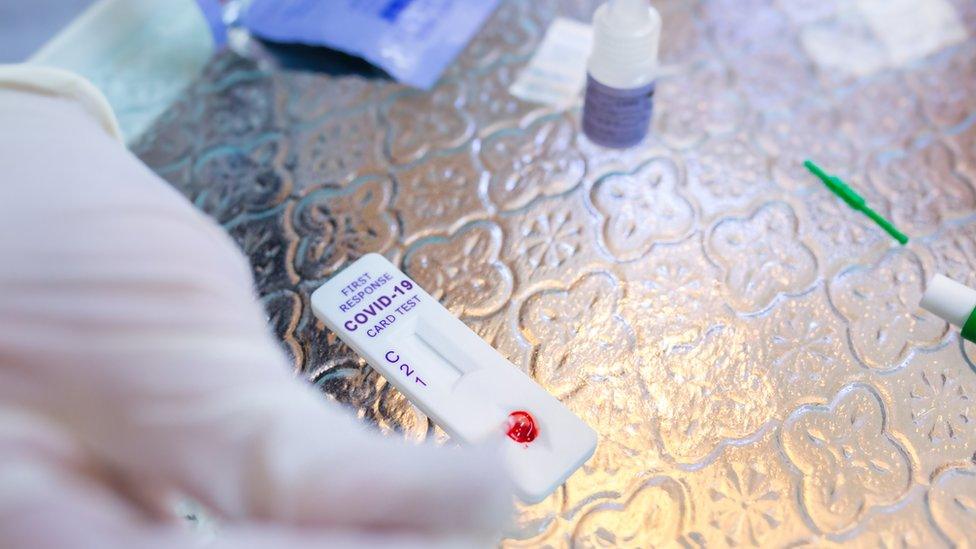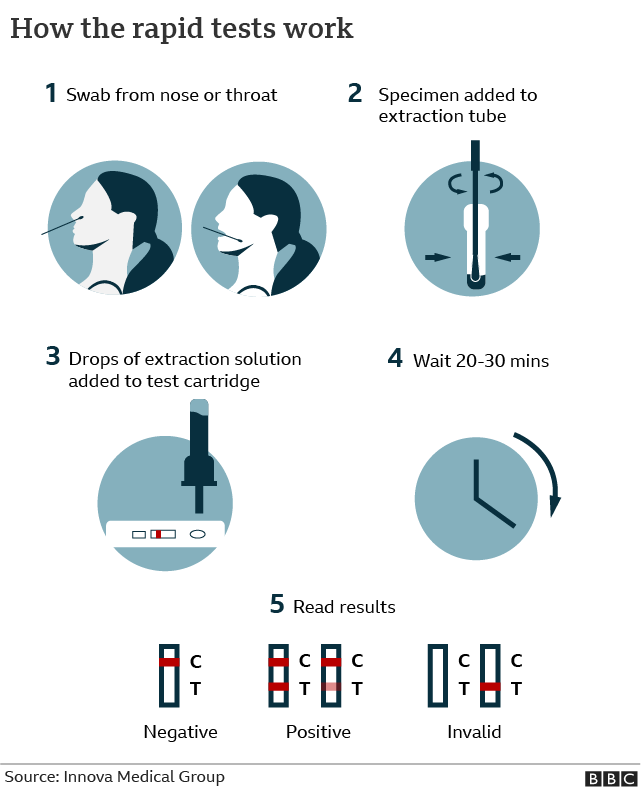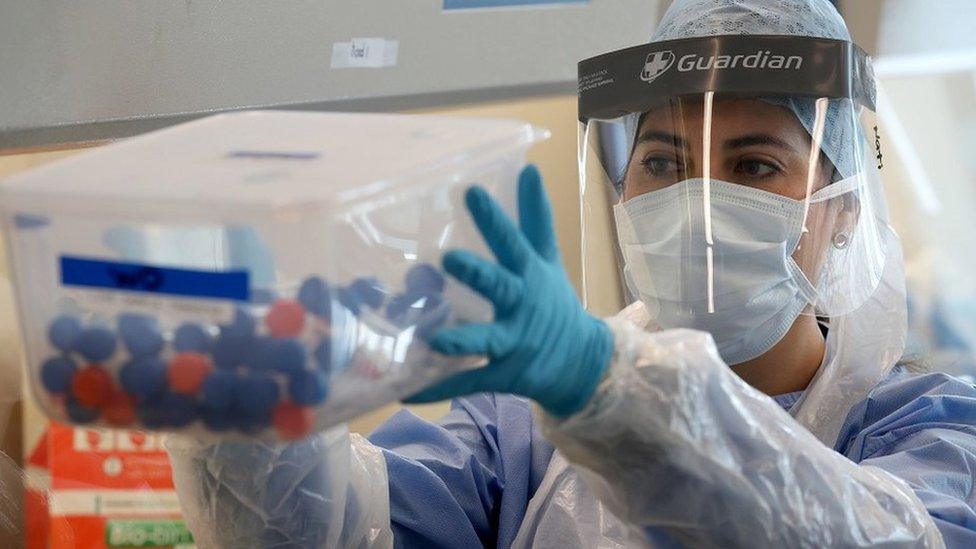Coronavirus: What is a lateral flow test and how does it work?
- Published
- comments

This is an example of a lateral flow test
Mass testing began in Liverpool on 6 November using new lateral flow tests.
The new tests being tried out are much quicker, giving a result in less than an hour, because they don't have to be sent to a lab to be processed.
It is not yet known how effective the new tests are for detecting the virus in people who are in the early stages of the disease.
Getting results quicker is really important in speeding up the response to the virus and using them could be a breakthrough in the fight against Covid-19.
How do lateral flow tests work?

Lateral flow testing involves a swab of the nose and throat to collect a sample, which is then inserted into a tube of liquid for a short time.
Drops of liquid are added to the test strip and after about half an hour a result will be shown.
Other swab tests need samples to be sent to a lab for analysis so take at least a day to get a result.
It is hoped that by using the faster tests people will find out more quickly if they have the virus or not, and that will make it easier to control the spread of the disease.
Environment Secretary George Eustice said: "A test is only as good as the speed with which you can turn a result around,
"What we've really been focusing on more recently is a faster test, so that people can act more quickly to prevent the spread of the virus so this, if we can make it work, is a major breakthrough."
BBC health and science correspondent James Gallagher said rapid or "lateral flow" tests needed high levels of the virus in the body to work.
It is not yet clear how good they are at catching people in the early stages of the infection, when the virus is still taking hold.
The government says people still need to follow lockdown rules and guidance like social distancing, hand washing and wearing face coverings.
- Published19 May 2020

- Published10 November 2020

- Published6 November 2020

